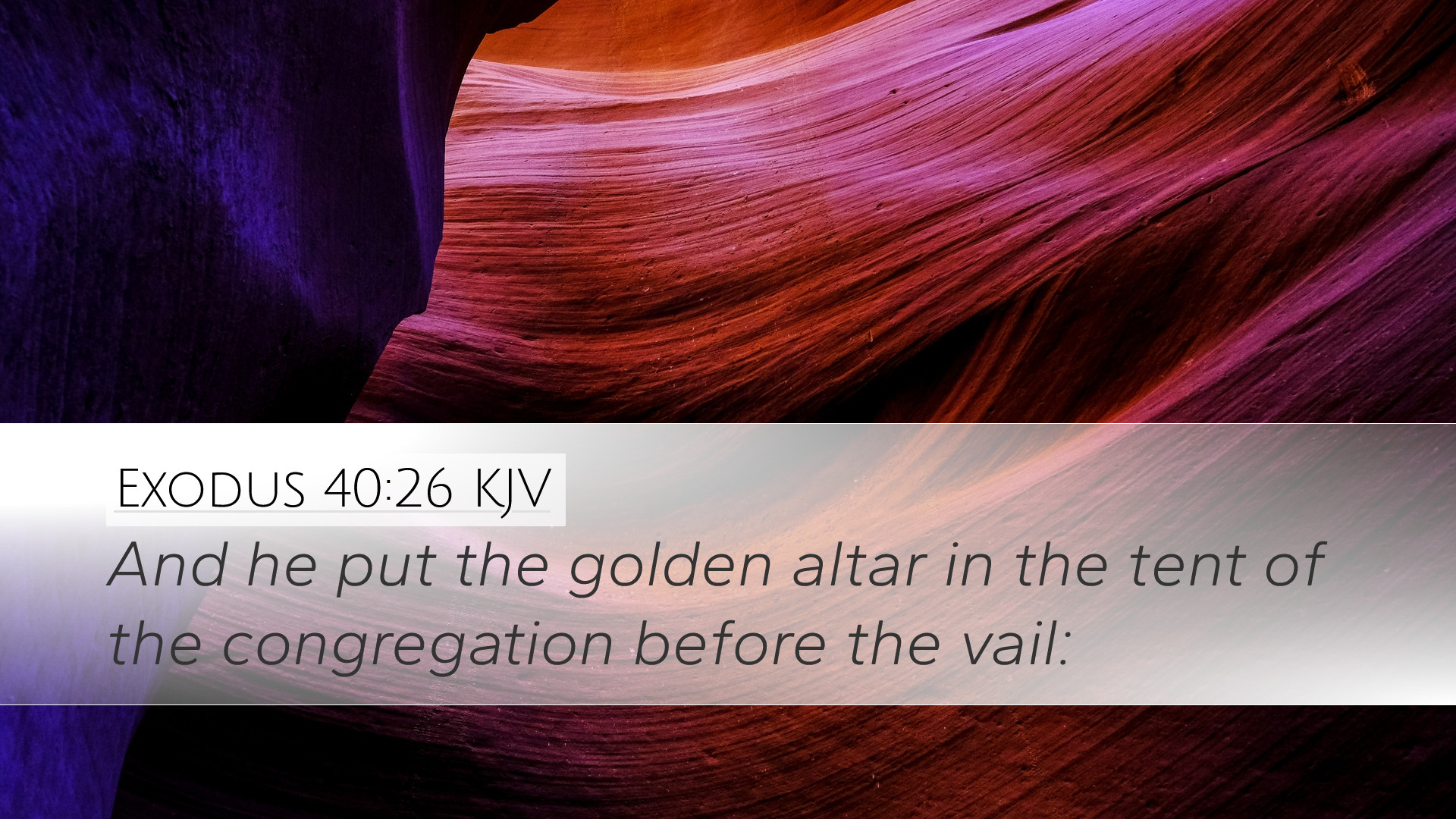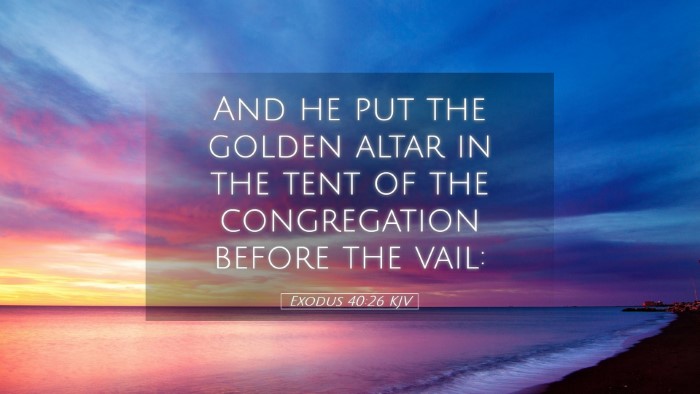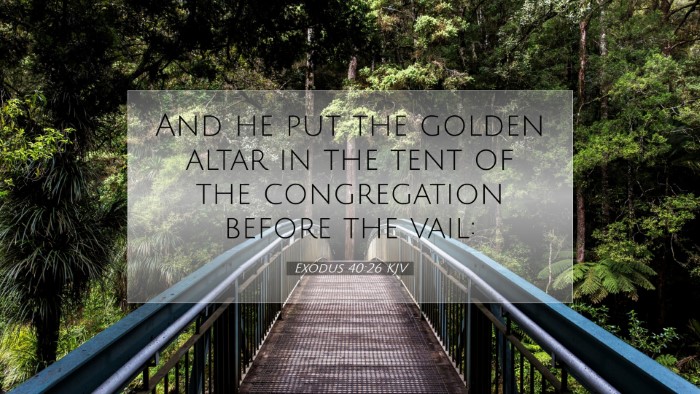Commentary on Exodus 40:26
Exodus 40:26 reads: "And Moses put the staves into the rings of the ark, to bear the ark." This verse is situated at the culmination of the construction of the Tabernacle and provides profound insights into the nature of holy worship, God's presence, and the role of sacred objects.
Introduction
This commentary synthesizes insights from public domain commentaries by Matthew Henry, Albert Barnes, Adam Clarke, and others to address the theological implications and historical context of this significant passage. This verse emphasizes the sanctity and proper treatment of the Ark of the Covenant as a central element in Israel's worship and divine encounter.
Contextual Background
The Book of Exodus marks a pivotal moment in the history of Israel, capturing the deliverance from Egypt and the establishment of a covenant relationship with God. The detailed instructions for the construction of the Tabernacle reflect God's desire to dwell among His people (Exodus 25:8). The Ark, as described, is the most sacred object within this dwelling—symbolizing God's presence and the covenant made with Israel.
The Role of the Ark
- Significance of the Ark: As the embodiment of God's covenantal promise, the Ark contains the tablets of the Law, symbolizing divine guidance.
- Representation of God's Presence: The Ark served as the meeting point between God and man, most profoundly manifested in the mercy seat upon it (Exodus 25:22).
Theological Insights
Understanding the implications of this verse requires an exploration of the established practices surrounding the Ark:
Proper Handling of Sacred Things
Moses's action in putting the staves into the rings of the Ark signifies the required reverence and appropriate reverence due to holy objects. As stated in the commentaries:
- Matthew Henry: Highlights that this action symbolized both the transportability of God's presence and the dignity with which sacred matters must be treated; a reminder for contemporary worship practices to elevate our approach to sacred things.
- Adam Clarke: Emphasizes the importance of obedience in carrying out God's commands, linking the physical actions performed by Moses with spiritual readiness and awareness of God's holiness.
Divine Instruction and Obedience
The instructions for the Ark’s handling must not be overlooked. The staves were inserted into rings, emphasizing the divinely mandated method to carry the Ark:
- Albert Barnes: Comments that the insertion of the staves demonstrated God’s desire to instate order within worship, suggesting that proper procedure reflects God’s authority over worship.
- Matthew Henry: Points out that God’s order requires adherence, as deviation can lead to disastrous consequences, recalling instances where improper handling resulted in serious repercussions (e.g., Uzzah's fate).
Symbolism of the Staves
The staves themselves can be rich in symbolic meaning:
- Transportation of the Ark: Illustrating God's readiness to accompany His people; a metaphor for the spiritual journey of believers moving toward divine promises.
- Unity and Community: The need for several individuals in the transport process indicates that community engagement is vital in safeguarding sacred practices and beliefs.
Pastoral Applications
For pastors and church leaders, this verse offers several practical applications:
- Reverence in Worship: The necessity to approach worship with a sense of holiness and reverence mirrors the practices established in the Tabernacle’s construction.
- Teaching on Obedience: The echo of Moses’s actions can inspire sermons on the importance of adhering to God’s commands in contemporary church practices.
- Community Involvement: Encouraging church members to participate collaboratively in worship and ministry, reflecting the collective responsibility shared in carrying God’s presence.
Conclusion
Exodus 40:26 encapsulates a significant act of obedience and reverence in the context of worship. Moses’s careful handling of the Ark serves as a lasting lesson in humility and honor, emphasizing the importance of proper protocol in sacred matters. The insights from the public domain commentaries collectively invite pastors, students, theologians, and scholars to reflect on their own practices and understanding of the sacredness of God's presence among His people.
Final Thought
In a world where the transcendent is often diluted, the call to remember the sacredness of God's dwelling, and to handle it with care, echoes profoundly within the church today.


